If you know me, you’ll know I love trains. I may be an endless romantic, but there’s no mode of transport I love best. And Europe is the perfect place for a train holiday – trains are (usually) cheap, convenient and well-organized, and sitting by a train window watching the Old Continent go by is the perfect way to spend those boring travel days.
Getting a Eurail or Interrail pass before you travel is a great idea to avoid the hassle of buying a ticket before each leg of your trip. In this post, we’ve put together a complete guide to Eurail and Interrail passes – here’s a brief summary of the various sections:
General Eurail/Interrail Ticket Info
Choosing your Interrail/Eurail Pass and Itinerary
How to Buy Your Ticket
The Rail Planner App
How to Book Trains
Our Summer 2015 Itinerary and Feedback
Other Bloggers’ Experiences
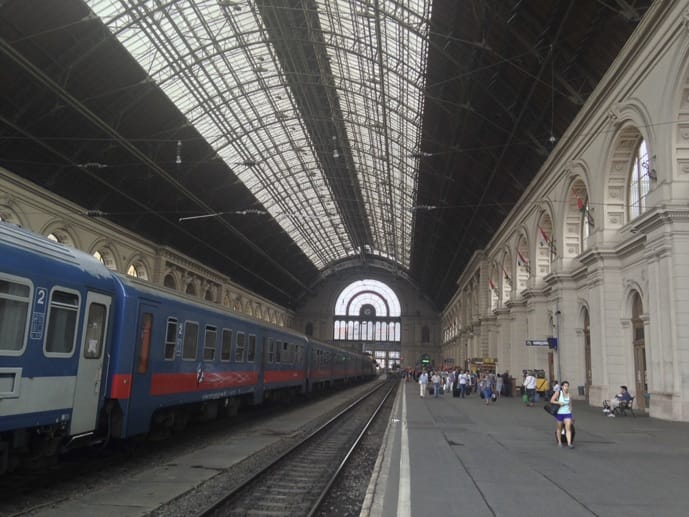
General Eurail/Interrail Ticket Info
Let’s start from the basics. What are Eurail and Interrail passes, and what’s the difference between the two? They are both rail passes, valid for travel on train networks all over Europe, or in selected countries, depending on the option you choose.
Eurail passes are for non-EU passport holders, and they are valid in 28 countries, while Interrail tickets are for EU nationals and residents, and they can be used in up to 30 countries.
One of the main benefits of a Eurail/Interrail ticket is flexibility. There are several types of passes to choose from, ranging from three days to three months in duration. Let’s have a look at them in detail:
Eurail pass
- Global Pass: perhaps the most popular choice, this pass allows you to travel on trains in all 28 EU countries.
- Select Pass: for travel in 4 neighboring countries of your choice.
- Regional Pass: for travel in popular 2 country combinations – such as France and Italy, Spain and Portugal, Benelux and Germany (wait… that is four countries!)
- One Country Pass: for travel in one of 28 EU countries.
Please refer to the Eurail or Interrail site for pricing – the cost of passes is updated constantly and it would be impossible for me to keep track of it!

Interrail pass
- Global Pass: valid in all 30 countries
- One Country Pass: valid in one of 30 countries
Interrail passes are not valid in your country of residence – for instance, if you’re travelling between Italy and Germany and you’re an Italian resident, you’ll have to get a regular ticket between your city of departure and the Italy border. However, you can get a discount of 50% for your fare to your country’s border – read here to know more!
PLEASE ALSO NOTE that Eurail and Interrail tickets are not just for people under 26 – anyone can buy them! However, under 26 can take advantage of cheaper fares. We’ve been asked countless times ‘how can you guys have an Interrail ticket even though you’re in your 30s?’ So we thought we’ll make this crystal clear.
Eurail and Interrail passes are for everyone!
While browsing the Eurail/Interrail website, you’ll sure notice the concept of ‘travel days’ – a travel day is any day in which you take the train. That doesn’t mean you can only take one train – you can make as many changes as you need to get to your destination, as long as you complete your journey within that one day.
Global passes (both Eurail and Interrail) can be valid for a continuous period of time (from 15 days to 3 months) or for a selected number of travel days within a certain period of time (for instance, 10 days within 2 months). Select, Regional and One Country passes are always valid for a set number of travel days within a certain period of time.
The starting date of your Interrail ticket will be printed on the pass – when you buy the pass, you decide when you want it to start. However, the Eurail pass needs to be activated at the station, meaning that even after you order it, you have the flexibility to choose the starting date of your pass.
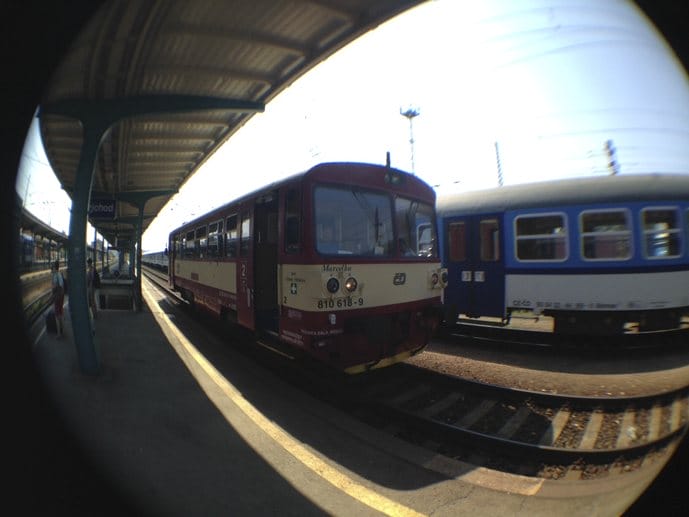
Choosing your Interrail/Eurail Pass and Itinerary
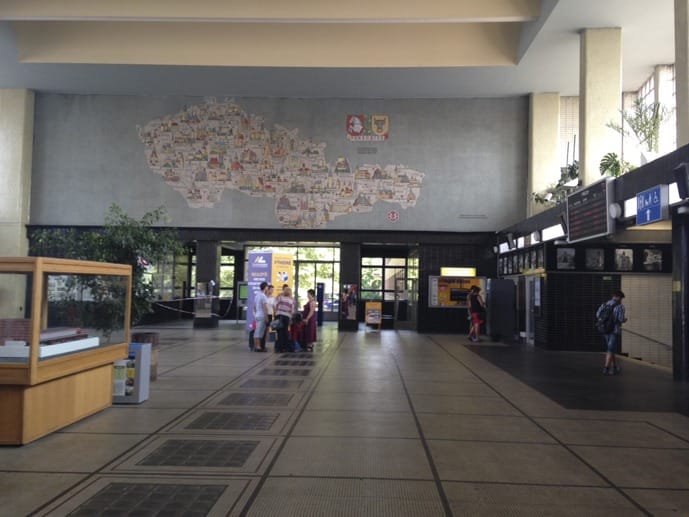
Let’s start from the basics. How much time have you got?
If you only have two weeks, and you really want to visit a large country like Italy for example, I would get a One Country Pass. A country like Italy (or Spain, or Germany, or France for that matter) offer so much to see and do that a few days simply won’t be enough.
On the other hand, smaller countries like Luxembourg, Belgium and Switzerland can be combined with others – Netherlands, Belgium and Luxembourg is a popular rail trip combination, and you’d get to see quite a lot even if you have just two weeks.
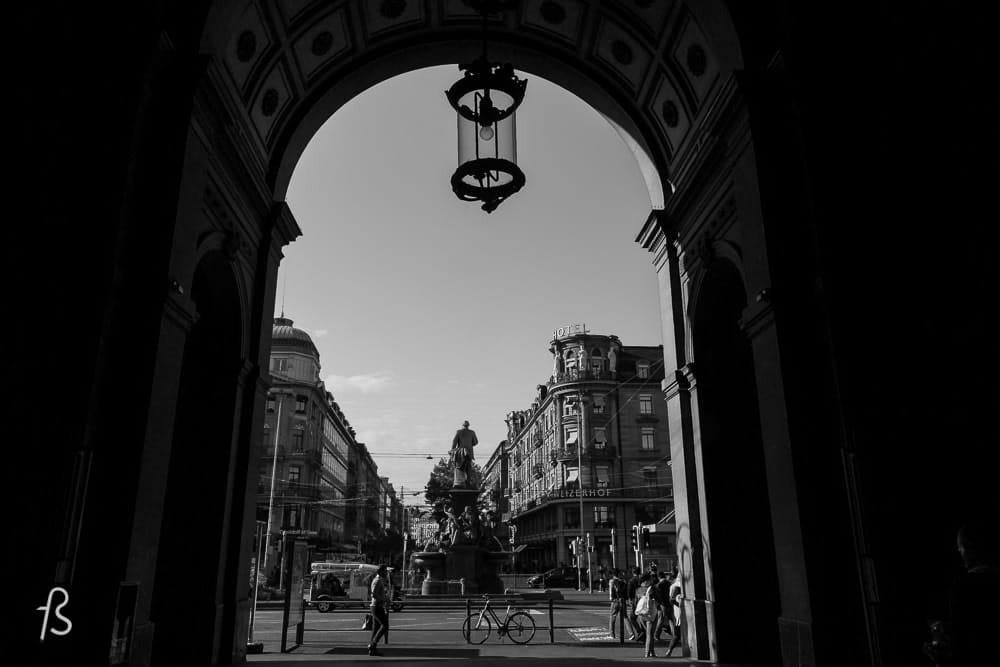
If you have more time, say three weeks or more, then Europe and its trains are your oyster. There are a variety of itineraries that could be covered – Spain and Portugal, for example, or Norway/Sweden/Denmark (and/or Finland). You could travel west to east, from Lisbon to Istanbul (and onwards to Iran… But that’s another story), or north to south, from Rovaniemi to Sicily (keeping that in mind for next time!).
Generally speaking, if you’re the ‘planning’ kind of traveller, I would have a look at One Country, Select or Regional passes first (if you’re getting a Eurail pass, of course), and see if you can save money with any of the combinations. If you’re the ‘random’ kind, then it’s much easier – just go for the Global pass.
If you choose a rail pass that allows a set number of travel days within a certain period of time, make sure you note down the date of your travel day as soon as you board that train – not when the controller comes around.
When planning your itinerary, be realistic. Do you really think you’ll be able to see Paris and Rome in two days? Do you think it’s a good idea to ALWAYS travel between cities by night train, just to save on accommodation? My advice is go slowly. Spend at least 3-4 days exploring your destination between travel days – more for capitals and other big cities.

How to Buy Your Ticket
Ok, so now you’ve explored the various categories of passes, planned (or not) your itinerary and decided which pass is the best for you. Just head to the Eurail/Interrail site, make your selection, pay and enter your address, and your pass will be mailed to you. The site says to allow a few weeks – we received ours within a few days.
Delivery is free to Europe, US, Australia, Canada, Brazil, Mexico, New Zealand, Japan, Singapore, Hong Kong, South Korea, China and Taiwan.
You need to provide your passport or ID number when buying your pass. The number will be printed on the pass and you need to have the corresponding document with you at all times – so make sure you enter the right number!
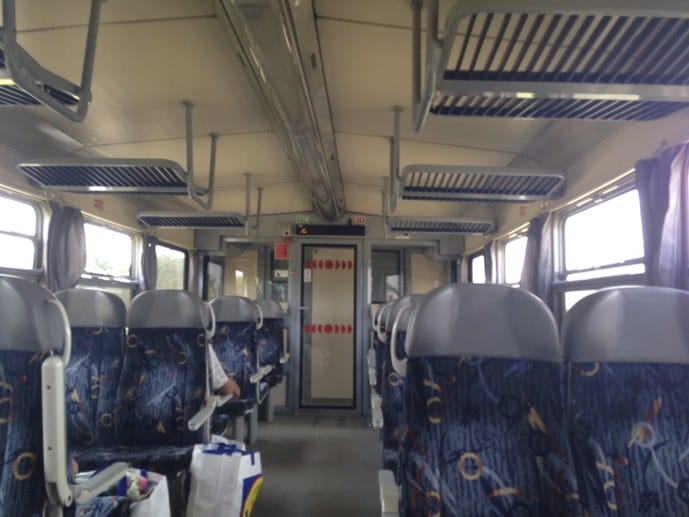
The Rail Planner App
Eurail’s official app is a great tool to plan your journey and to keep up with train schedules once you’re travelling. It’s free to download and it works offline.
The app (for smartphones only) gives you access to train timetables of all European countries. It’s all there, at your fingertips – no need to navigate strange websites in funny languages! The app comes in particularly handy when researching connections between two stations in different countries, especially when changes are required.
To give you an idea of how to use it, let us show you two examples – one is a straightforward connection between two major cities and the other is a trip between a village and a medium-sized city in two different countries.
Berlin-Prague
I entered Berlin to Prague in the search box of the app, on a random day at 10 am (because I don’t like waking up early). have a look at the results – there is roughly a train every other hour and it takes just over 4 and a half hours. Booking is not mandatory, or else it would be marked on the search results.
I personally would just go to the station and board the first available train – but if you’re travelling in summer you may want to book, as it’s a popular route for rail travellers.
Smizany-Eger
That’s where the app shows its magic. We travelled from Smizany, a village in rural Slovakia not far from the Tatra Mountains, to Eger, a medium-sized Hungarian town. The national rail companies sites only give info for their own countries – but what happens of I want to cross the border? Rail Planner shows it’s not that hard to find out.
I need to travel to Kosice, that’s actually a very pretty town in Eastern Slovakia (where I’ll have time to wander for a bit) and from there to Fuezesabony in Hungary where I’ll change on a local train to Eger. It would have taken me ages to figure that out just from the national rail websites!
See? How easy is that? You can also check how many stops your train will do (so that you know when to get off), and you can see real-time connections at any station, provided you have Wi-Fi or 3G.

The app also has a section called ‘Pass Benefits’, divided by country, including all participating rail companies and discounts/freebies you can get with your pass.
Make sure you check this section and understand which rail companies accept Eurail and Interrail passes. Several private rail companies don’t accept the passes, even though they do show up on searches using the Rail Planner app. Some examples are Italo in Italy, Thello in France and Regiojet in Czech Republic and Slovakia.
How to Book Trains
Let’s get this straight once and for all. Booking trains is not always compulsory – and when it is, it’s clearly stated in your search results on the Rail Planner app and on timetables at the station. When in doubt, ask.
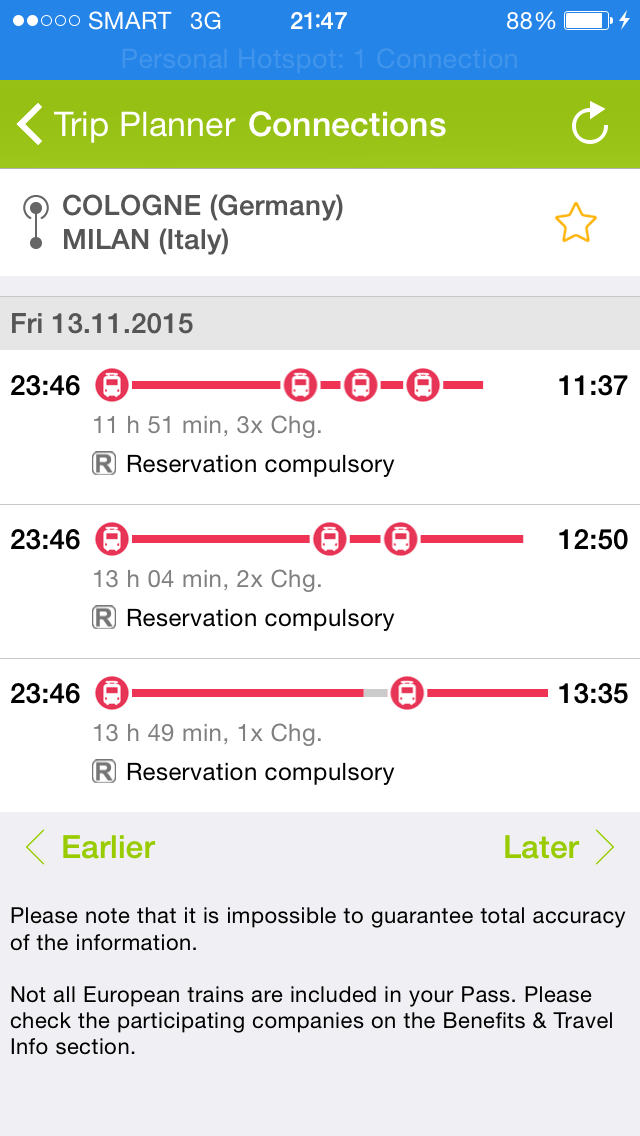
Countries where you’ll often have to book trains include Spain, Italy, France and Switzerland. The booking fee is not included in the price of the pass and needs to be paid separately each time.
Booking can be done in person at the station, online through the rail company’s website, or you can ask Eurail to book trains for you for an extra charge of €8 on top of the booking fee.

Eurail/Interrail travelers often complain of booking fees. They do indeed add up – for instance, the average booking free for a high-speed train in Italy or Spain is €10. However, in most countries it will be possible to use slow local trains with no booking fee – which might mean adding several hours to your trip, but with a more scenic route as an added benefit (well, most of the time).
We travelled for over 2 months around Italy, Germany, Poland, Czech Republic, Slovakia, Hungary, Slovenia and Croatia and only had to pay for a booking fee twice – once while going through Switzerland and once in Italy.
However, booking is advisable in high season when travelling popular routes like Berlin-Prague-Bratislava-Budapest-Vienna or Paris-Brussels-Amsterdam, especially when travelling on a second class ticket.
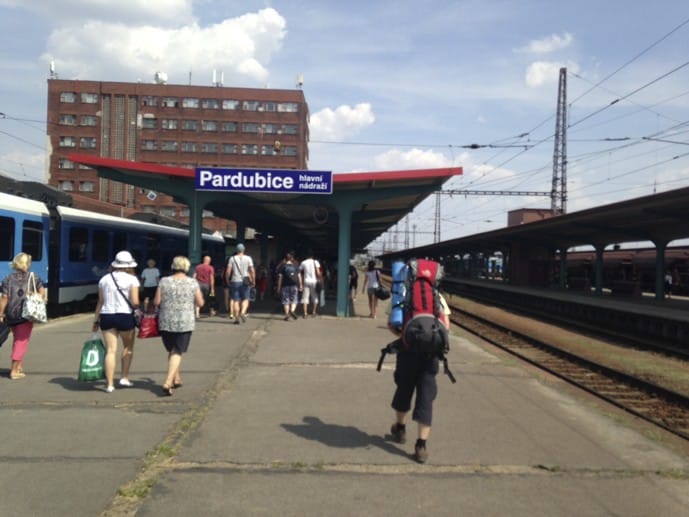
Our Summer 2015 Itinerary and Feedback
Last summer we travelled around Europe on two sets of Eurail/Interrail Global passes. In both cases, as an EU citizen I got an Interrail pass, while Nick got a Eurail one.
Itinerary 1 – Germany
Our first trip was focused on Germany, where we spent three weeks as part of the #mygaypride campaign.

Here’s the full itinerary:
- Bologna-Munich via Innsbruck
- Munich-Berlin
- Berlin-Dresden
- Dresden-Rathen-Dresden (day trip to Saxon Switzerland)
- Dresden-Cologne
- Cologne-Milan
I had to pay separately for the Bologna-Brennero (Italian-Austrian border) and Domodossola (Italian-Swiss border)-Milan tickets because I wasn’t allowed to use my Interrail pass in Italy, and we had pay a 5 CHF booking fee on a Swiss train, but other than that we paid no booking fees whatsoever.

Germany is the perfect country to travel on a Eurail/Interrail pass. Trains are comfortable and reliable and booking is rarely compulsory, meaning that you can just rock up at the station and hop on the first available train.
On top of that, trains are pricey in Germany unless you book well in advance, so you’ll probably get your money’s worth on the pass just with a couple of long train rides.
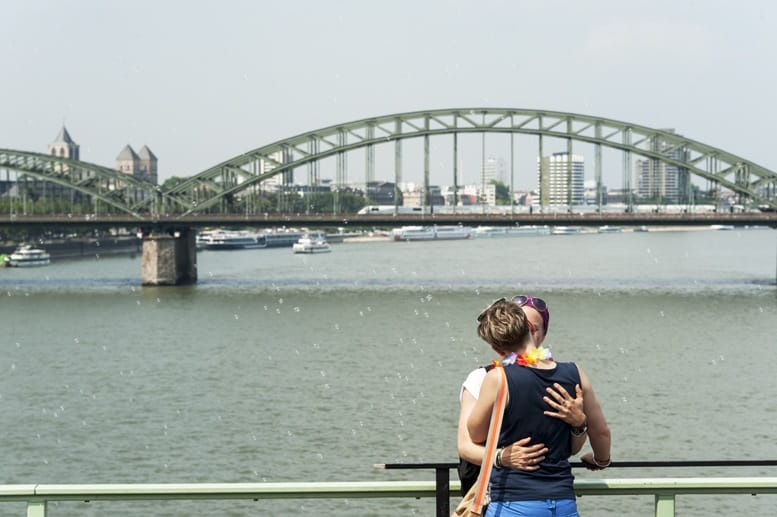
Itinerary 2 – From Poland to the Mediterranean
Our second trip started in Poznan and ended 7 weeks later back home in Milan. We tried to get off the beaten track as much as possible, as you’ll see from the itinerary below. I paid for all train trips in Italy and Nick paid for booking fees only on Italian high-speed trains.
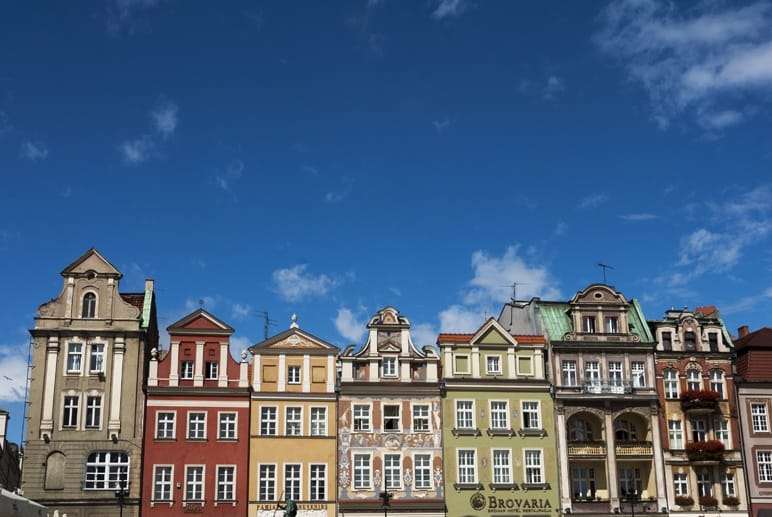
Here’s where we went:
- Poznan–Prague
- Prague-Mala Skala (for our 3 day stay in the forest with Czech Adventure)
- Mala Skala-Zabreh na Morave (for our stay at Bozenov Adventure Hotel)
- Zabreh-Bratislava
- Bratislava-Poprad
- Poprad-High Tatra day trip by train
- Poprad-Smizany for Slovensky Raj
- Smizany-Eger via Kosice
- Eger-Budapest
- Budapest-Ljubljana for Jezersko and Herbal Glamping in Ljubno
- Ljubljana-Zagreb
Zagreb is where we switched to buses for the rest of Croatia and Montenegro. Trains are very poorly maintained south of Zagreb and the Zagreb-Zadar trip which takes 3 hours by bus would’ve taken 12 hours by train.
From Montenegro, we caught a ferry to Bari in Italy and then took the train to Milan (Nick) and South Tyrol (Margherita).
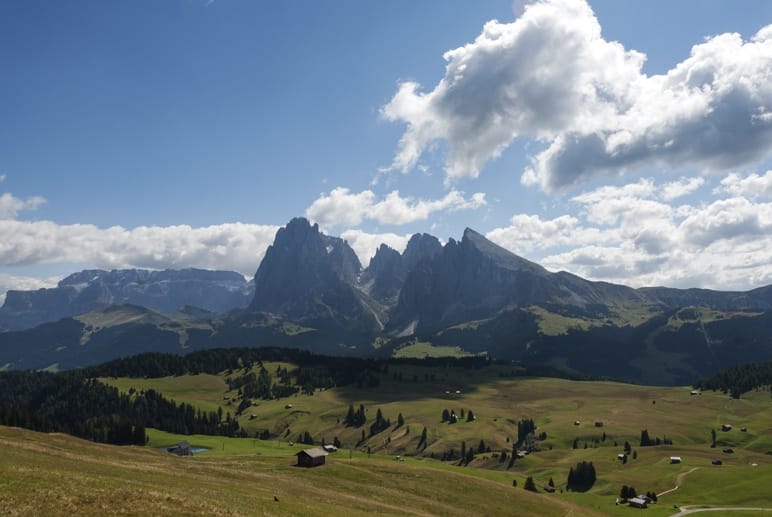
Our experience on these routes was largely hassle free, but we did notice that trains work a lot better between major cities rather than between villages or provincial towns. For instance, we had to change trains 5 times between Mala Skala and Zabreh na Morave, and we ended up travelling for the whole day.
Now, I’m not advising against taking trains between smaller cities, but be prepared for delays, missed connections and a very slow pace of travel. Most local trains in Czech Republic, Slovakia and Hungary are second class only and vary from one-car diesel engines to super-modern double storey trains with fast wifi.

Trains work quite well up to Zagreb, but once you travel to the southern Balkans buses are the way to go if efficiency is what you’re after. The tracks are very poorly maintained and train journeys can take double or more what the schedule says. For instance, the night train from Belgrade to Bar in Montenegro is supposed to take 11 hours but often takes close to 20. If you’re after adventure, definitely go for it – but if you’re on a tight schedule, opt for the bus.
All in all, we believed that travelling on a Eurail/Interrail pass was a wonderful experience. In fact, it was my third time with an Interrail ticket – in 2003 I toured France, Belgium and the Netherlands (my first serious trip around Europe!) and in 2011 Nick and I travelled from Milan to Istanbul via Balkans, and then onwards to Eastern Turkey and Georgia (mostly by bus).
The idea of having ONE ticket and not having to worry about anything is priceless. The pass allows you to save a lot of time – I personally hate queuing up at stations to sort out tickets every other day.
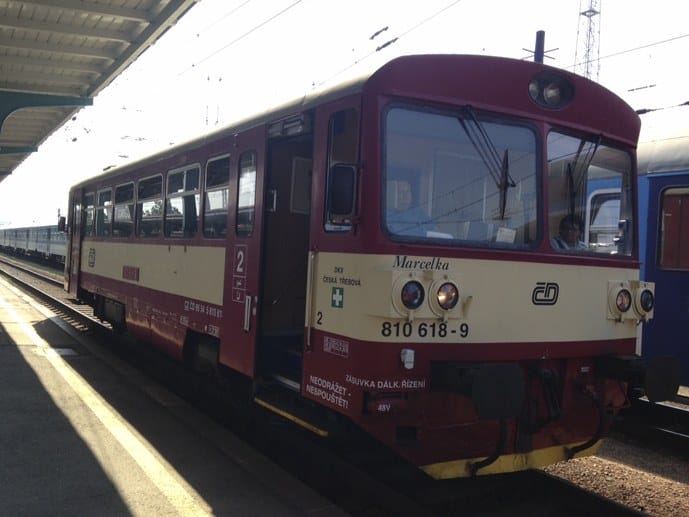
I also love the flexibility that the Global Passes allow. You can go literally anywhere that takes your fancy – there are 28 (or 30) countries to choose from! For instance, Eger and Smizany were last-minute decisions for us.
In terms of money, Eurail/Interrail passes definitely make sense if travelling around countries where trains are expensive like Germany, France and Italy – even with booking fees you’ll be saving a ton of money on the full priced tickets.
In our experience, anywhere east of Germany and Austria Eurail/Interrail Global passes are worth the cost if you’re planning to move around a lot – otherwise you may want to look into Regional or One Country passes, or just buy individual tickets.
Here are the experiences of other bloggers – and what about you? Have you travelled or would you like to travel with a Eurail or Interrail pass?

Other Bloggers’ Experiences
Alejandro Nuñez @ Mi Viaje por el Mundo – Train between Sofia and Istanbul
The first time I traveled to Europe using the Eurail pass was in 2008, the list of countries where the pass was valid was much shorter than is nowadays and that was one of the main reasons I skipped most of Eastern Europe.
On my second trip around Europe I decided to do it again by train, going all the way from Germany to Turkey and back. Everything was going fine until the part between Sofia and Istanbul.
The Bulgarian railroad system is old and the trains haven’t been updated in a long time. The wagons with air conditioning can become a sauna during the summer because the air conditioning won’t work. The landscape is beautiful but consider a long and hot ride. No one speaks English and most of the signs are in Cyrillic alphabet so trying to find your way around Bulgarian trains is a challenge by itself.
The Turkish railroad system has been an ongoing project for years. The trains barely exist and are replaced by buses in many sections of the road.
When you combine these factors you will have a long, uncertain and not-so-pleasant train ride between Sofia and Istanbul.
If you look online for this route you would not find any up to date information, some webpages even say that doesn’t exist anymore. I was determined to use a bus (and probably I should have used it) but just for curiosity I went to Sofia train station to ask and they told me the route was available and cheap. I had the time to do it and I could save a few Euros which sounded reasonable at the moment.
The adventure starts since you buy your tickets. The system doesn’t work for this route so you will receive a hand written pass. Remember I told you nobody speaks English? So, good luck on finding the correct platform on the screens with only Cyrillic alphabet. Once you find the train, make sure you board the correct wagon cause in the middle of the ride they would separate some of them and if you are in the wrong one you might end in other city thinking you board the correct train. Eventually, because the railroads are under construction, you might need to get off the train into a bus.
Crossing the border between Bulgaria and Turkey is not hard but it’s slow and happens in the middle of the night, this is my personal experience but consider the fact that the train railroads were under reparation at that moment so might be different when you read it.
The train will depart in the afternoon from Sofia station and a few hours later you have to change from the train to a bus. You will arrive around 2 A.M. to the Bulgarian border, you have to get off the bus and an officer will check your passport and let you cross. You have to board the bus again and then wait for a long queue of buses waiting to cross to Turkey too.
Once you get to the Turkish border you need to get off the bus again, give your passport with the visa (if required) to the officer and he will keep it for a while, walk a little bit and board again. The bus will drive 5 min or less then get off once more, now you have to take out your bags from luggage compartment and cross customs, which is basically put your bag on a X-Ray machine.
Get your bags and you on the bus again and wait. A few minutes later the driver will come and give you your passport and then you are good to go but you will only be on the road for another 5 minutes and then drop off in a train station. Here you will have to change buses or trains to a Turkish ones. Bulgarian trains/buses doesn’t go all the way to Istanbul that’s why you make this change.
After all this hop-on hop-off the buses in the middle of the night you will be arriving at Istanbul around 7 or 8 A.M., the city probably would be covered by a morning mist and if it’s your first time in the city prepare your self to be amazed when the bus drives by the coast line heading to the train station.
The Istanbul train station is literally a ghost town, there are no trains going in or out but it’s right in the heart of the old city, walking distance from the Grand Bazaar and many other attractions. If your hotel it’s not near by then you can take any public transportation from there.
This train ride it’s the second most longest and chaotic that I have done (the winner is trying to get from Istanbul to Bucharest) and it’s not worth all the hassle. I recommend to flight between these two cities but if you bought the Interrail / Eurail Global Pass and you are in a really tight budget then use it, if not, take a plane or at least a bus. It would be faster, you won’t have to make all the train changes in the middle of the night and would still have energy to see the city the next day.
Inma Gregorio @ A World to Travel – Trains in Austria
Traveling by train in Austria is something a 2 year old could do on its own. That easy and convenient.
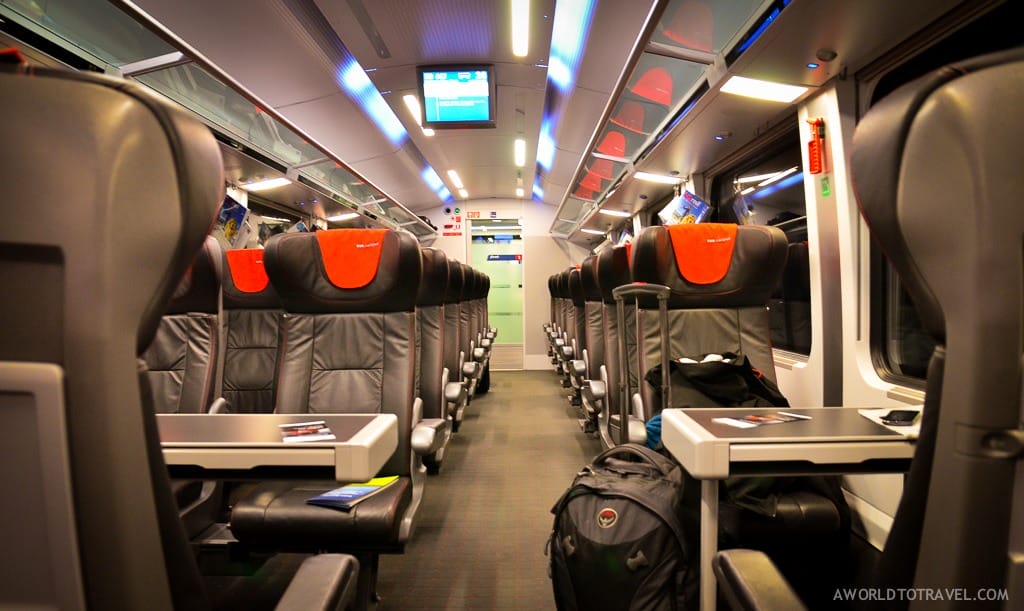 Amazing Austrian train! – Photo Credits A World to Travel
Amazing Austrian train! – Photo Credits A World to Travel
Millie Aldrich @ Millie Goes – Interrailing in Germany

Inter-railing Europe was my first major backpacking adventure and I’d recommend it to any first timer. I hit 18 countries, but one of the best experiences I had was in Germany. We hopped a few cities within the country, and the service we received for the amount we paid was unbelievable. When travelling from Munich to Berlin, after a bit of a night out we ended up missing our train. Now while the EU pass gets you on all the trains, you still have to pay to book a seat on certain busy routes.
Obviously, when travelling on a budget having to pay another 8 euros for a new seat reservation would result in giving up a meal the next day but we had no choice. After queuing for a few minutes and explaining our situation to the ticket office expecting to pay for another seat, we were amazed to be told that she would swap us to the next train free of charge, and as it’s a quieter train we would get some money back as the reservations aren’t so expensive, despite it being our fault!
Another train from Berlin to Prague, we didn’t manage to get a seat with the train being so full and so sat in the walkway between carriages. The conductor saw us and didn’t tell us to move like in the UK, but bought us a pillow each to sit on! All I can say is, I wish they ran trains like this in England.
Betsy Wuebker @ PassingThru – Eurail Pass in Belgium
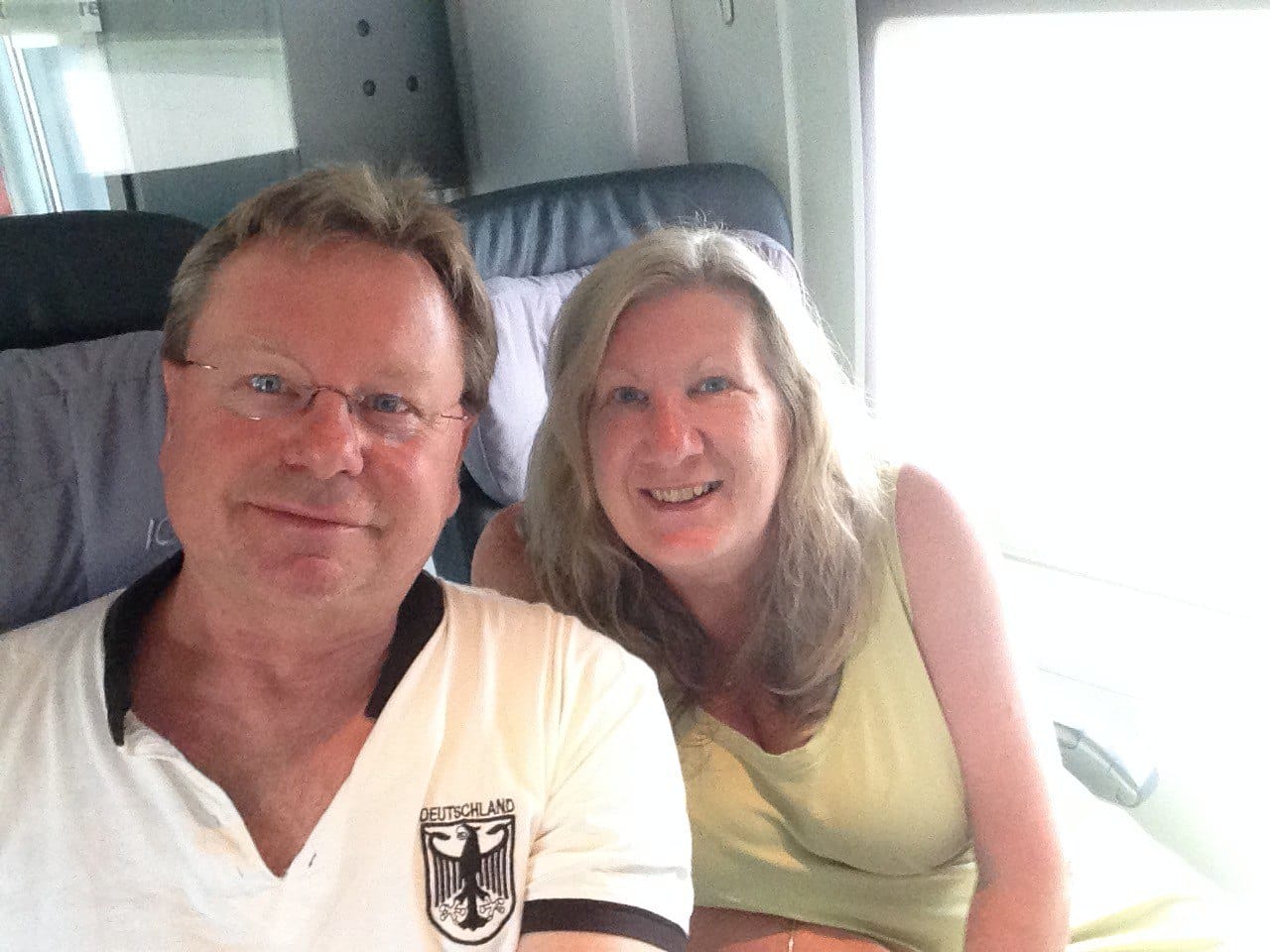
We utilized our Eurail 1st Class pass throughout Europe during a recent two-month visit. (Disclosure: we won them in a travel conference drawing). Our passes proved to be a godsend in Brussels! Pete had to make an emergency trip back to Paris to retrieve his missing wallet – it had miraculously been saved by a saintly cab driver.
The process couldn’t be easier: at Brussels Midi station, there are international ticket offices for same-day or future ticketing. With a Eurail pass, you need only pay a reservation fee which gets you an assigned seat. Brussels to Paris was approximately $25 USD for a first-class reservation at the time of our purchase. Take a number at the ticket office and when you are called, the representative will do the rest.
If you’re traveling domestically in Belgium, just get on the train you want and show your Eurail pass when asked. Belgium is a small country, so it’s very easy to get from one city to another. It’s no more than 90 minutes from Brussels to Ostend on a local train.
Trains in Belgium are modern and efficient, schedules are timely, and stations are pleasant and safe. We also received a bit of a discount on the Eurostar Chunnel route from Brussels to London due to our Eurail passes (and helpful assistance from station representatives who enabled us in jumping a long security queue). This is our second experience using Eurail passes during a lengthy visit to Europe. We wouldn’t go without them!
Chris Boothman @ A Brit and a Southerner – Eurail Pass in Italy
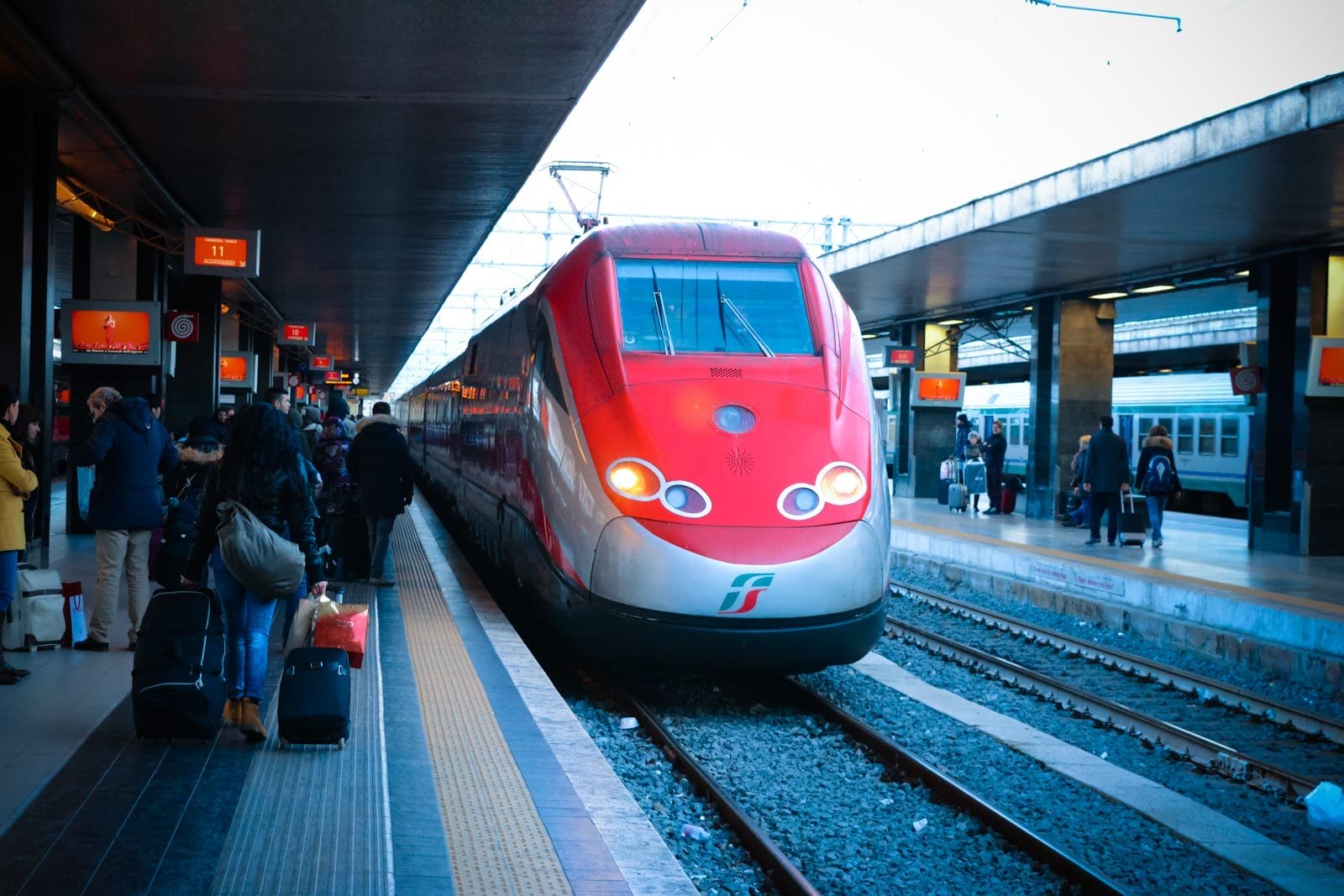
If you are planning a trip around Europe, there is no better way to get around than by train. The efficiency and availability of networks throughout a large number of European countries is such that taking the train anywhere across this continent is a no-brainer.
Our introduction to European train journeys started in the heart of the Italian capital – Rome. Donned with our Eurail Passes that we had received a few weeks earlier, we headed inside the Rome Termini Train Station hoping to figure out how this Eurail Pass worked. The process couldn’t have been any simpler (minus the hour long wait) as we visited a customer service specialist who validated our pass and we were ready to embark on our journey. Note this validation is only required the first time you use your Eurail Pass.
If you are using a Eurail Pass, the majority of regional trains will allow the ‘hop-on, hop-off’ approach and no reservations are required. However, high speed trains, night trains and many that cross borders into other countries will require a small surcharge to reserve a seat. After reserving our seat on the Rome to Milan high-speed train, we headed towards the platform.
One thing worth noting as we walked around Rome’s Central Station was the inherent beauty of the station, both interior and exterior. We really had no idea how cool many of these historic European train stations are and the architecture was a perfect reflection on Italian flair and decadence. The historic, intricate details of the station soon transformed into the modern day technological era, as we saw the gorgeous Frecciarossa high speed train that we would be traveling on for three hours.
Passing through the gorgeous Italian countryside, mixed with a few idyllic villages and towns we arrived in Milan a few minutes early confirming that the best way to travel Europe is undoubtedly by train!
If you are looking for convenience and potential savings, purchasing a Eurail Pass is definitely the best option. We recommend researching the cost of taking individuals trips versus the cost of the pass, but for us it was a substantial savings given that we were taking the train throughout several countries and consecutive days.
Erin Bender @ Travel with Bender – Eurail as a Family

We spent two months travelling from Belgium, through Luxembourg, Germany, Switzerland, Austria, Croatia and Greece as a family of 4. The biggest thing we get asked is: Is it worth it as a family?
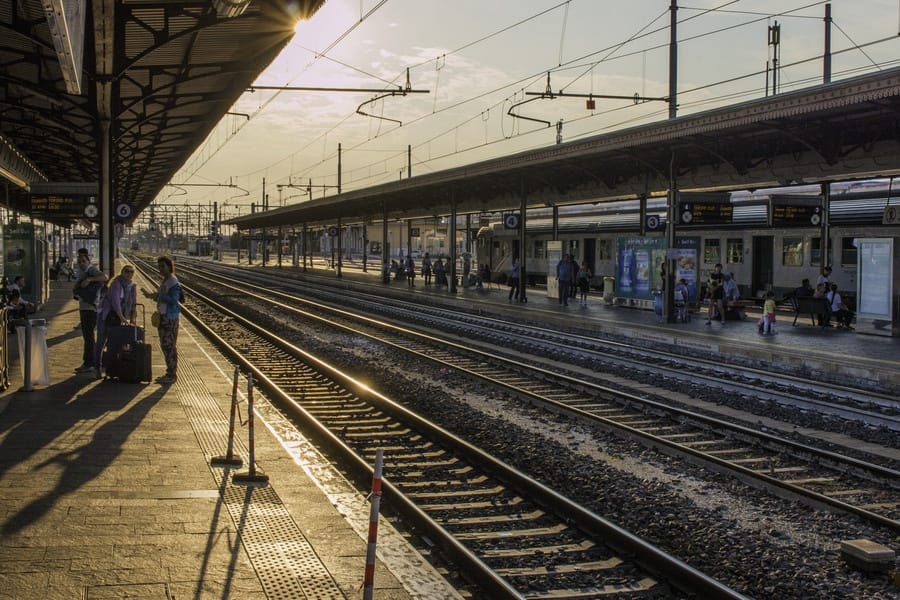
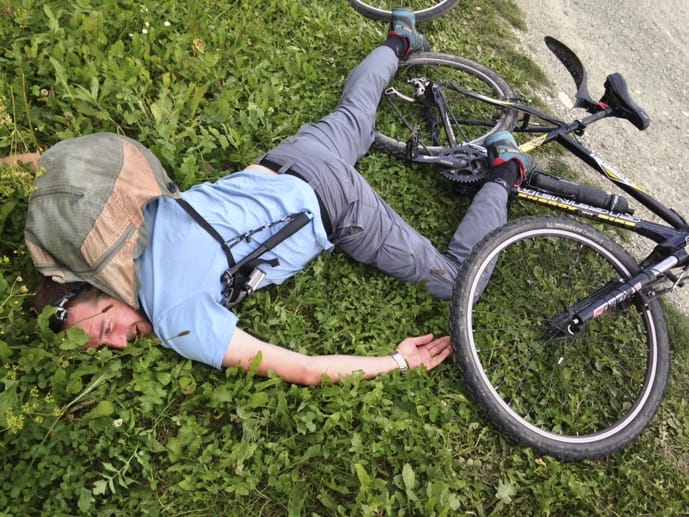
We received our Eurail and Interrail passes free of charge as part of two blogger campaign. All opinions remain our own and we do recommend the passes highly – or else, we wouldn’t have been interrailing three times (and planning our fourth one!)
Pin it for later?
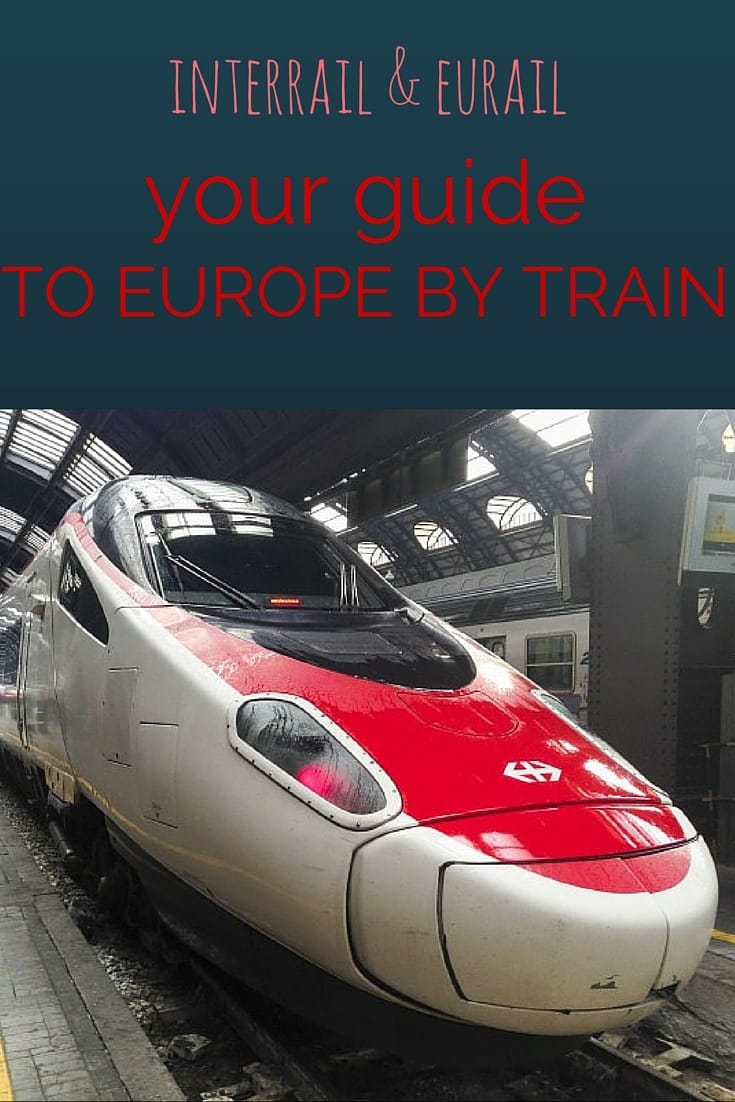

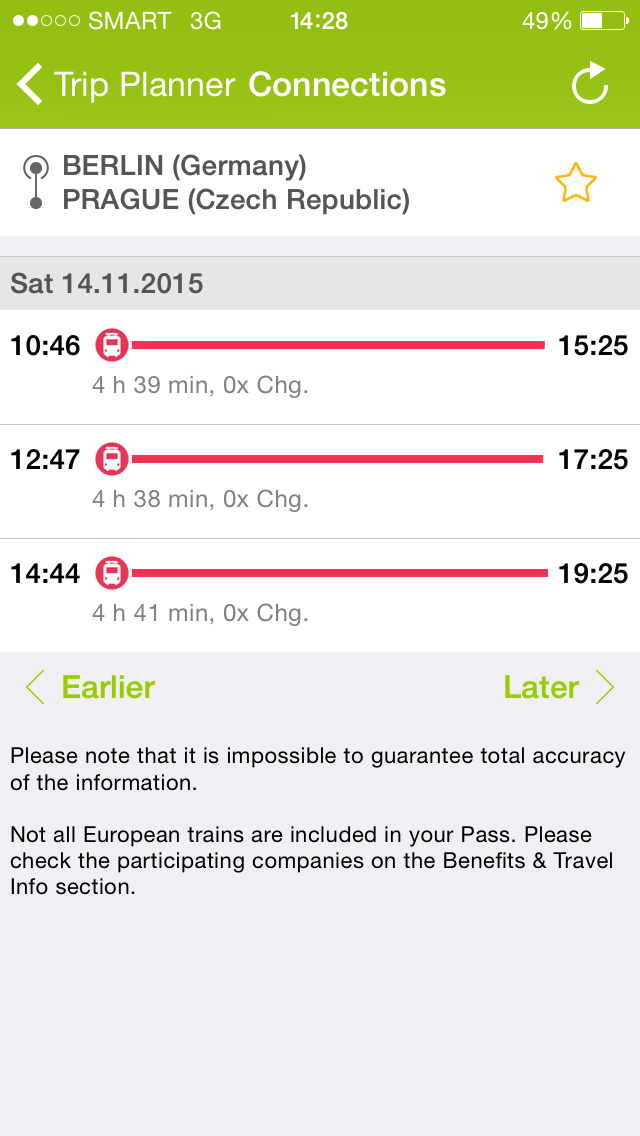

Friends! Let me know if I forgot something!